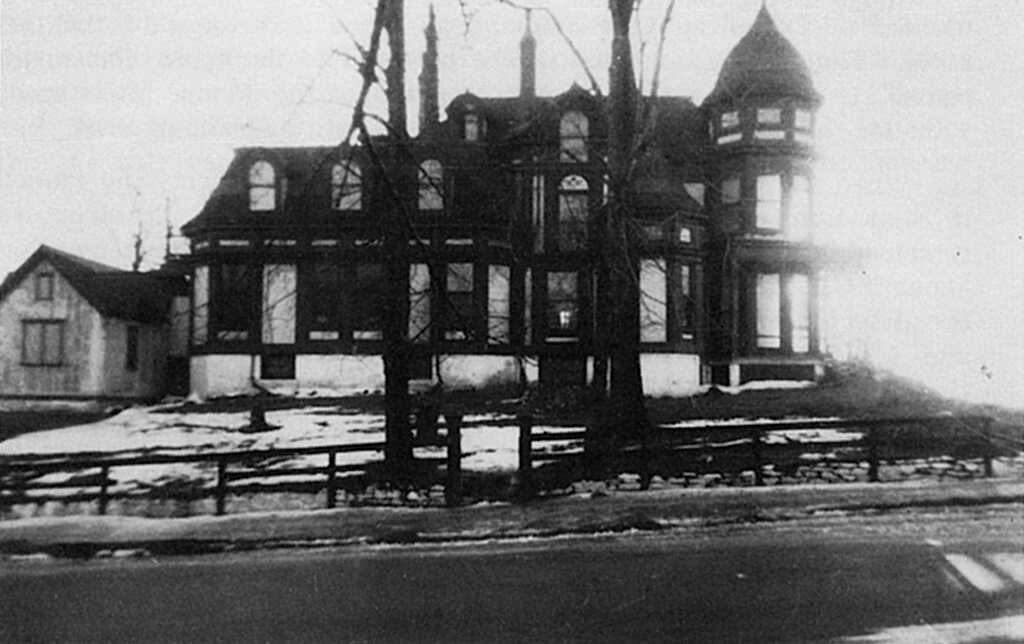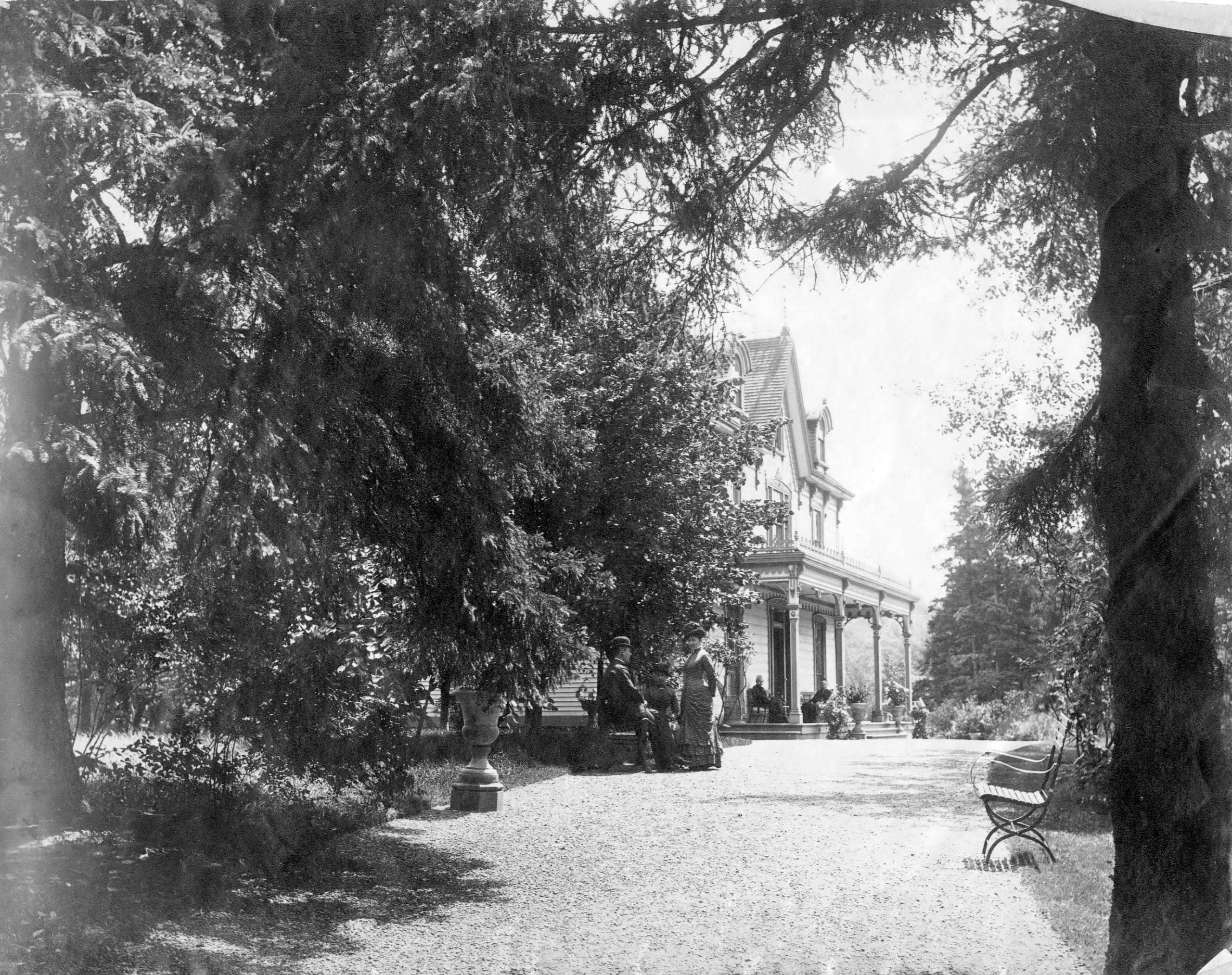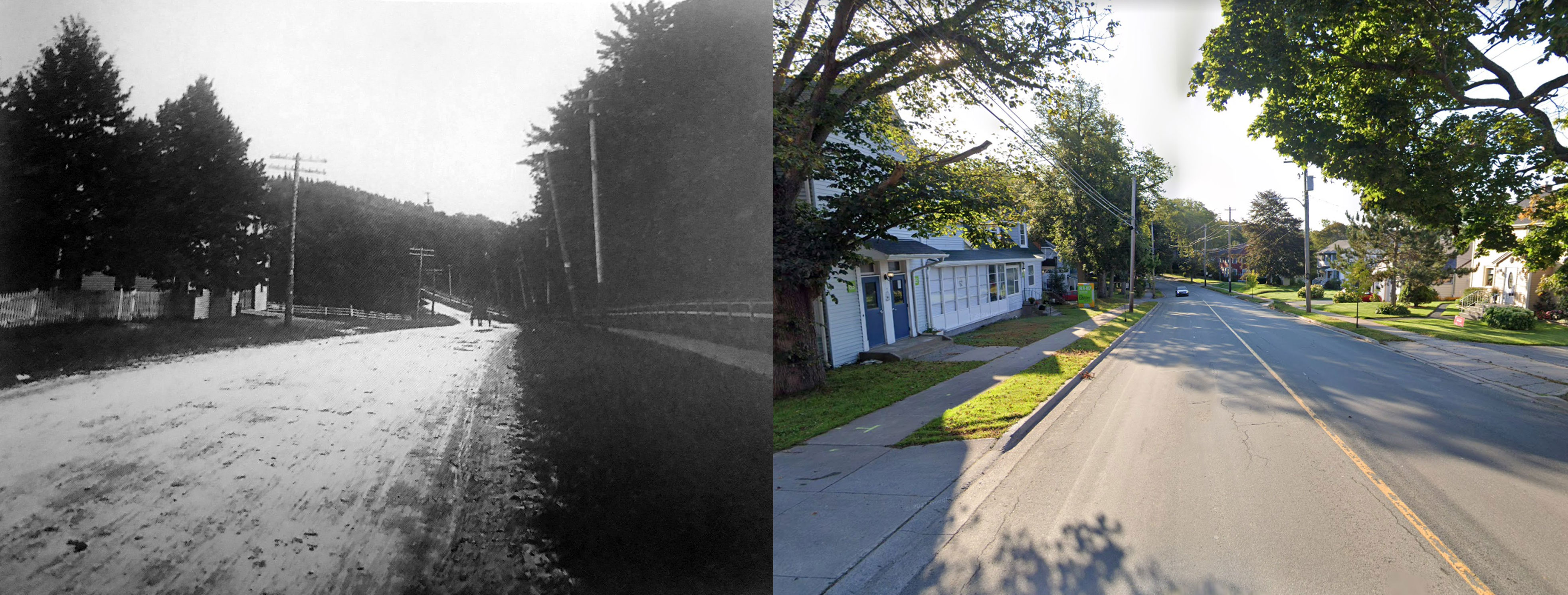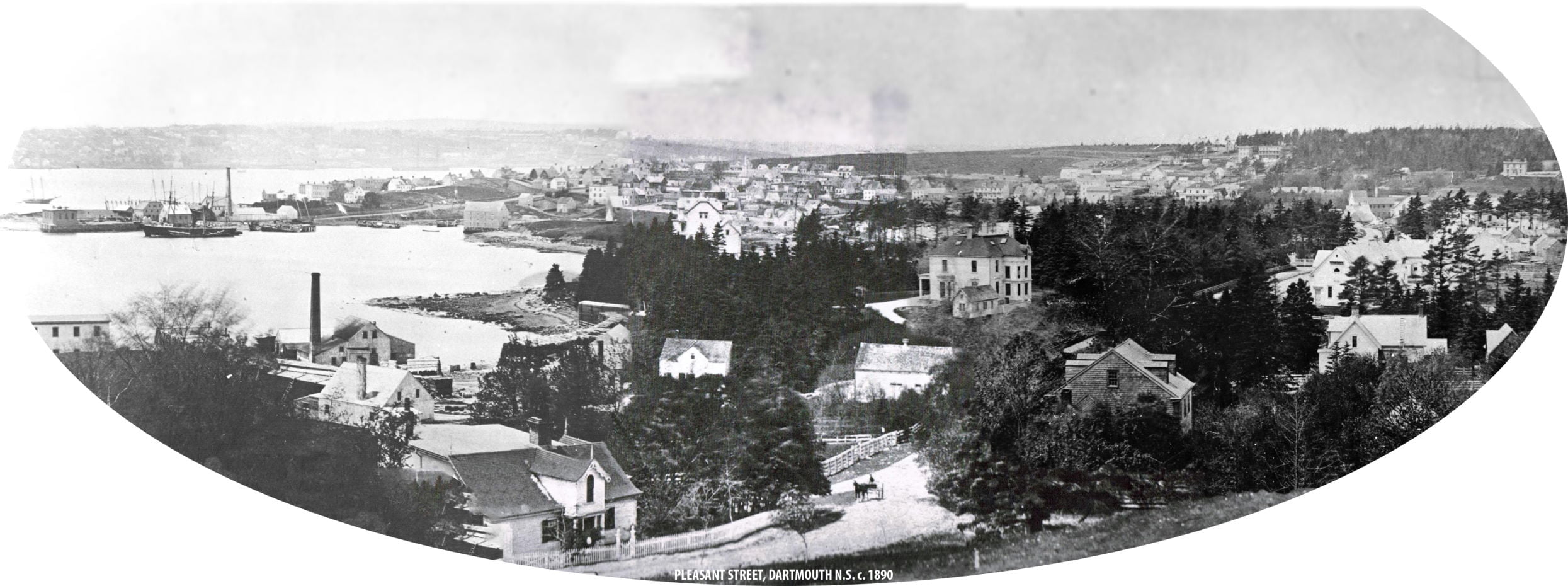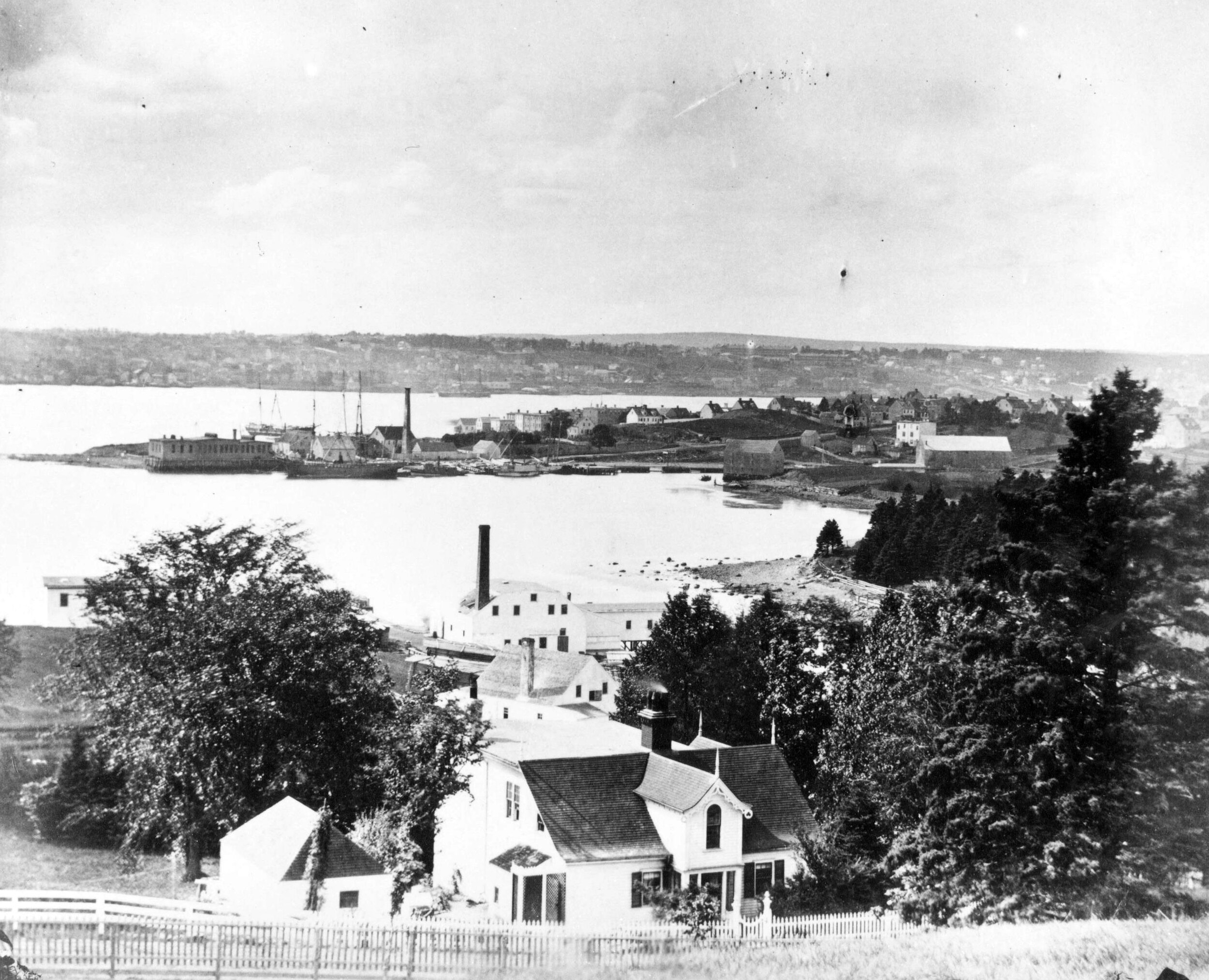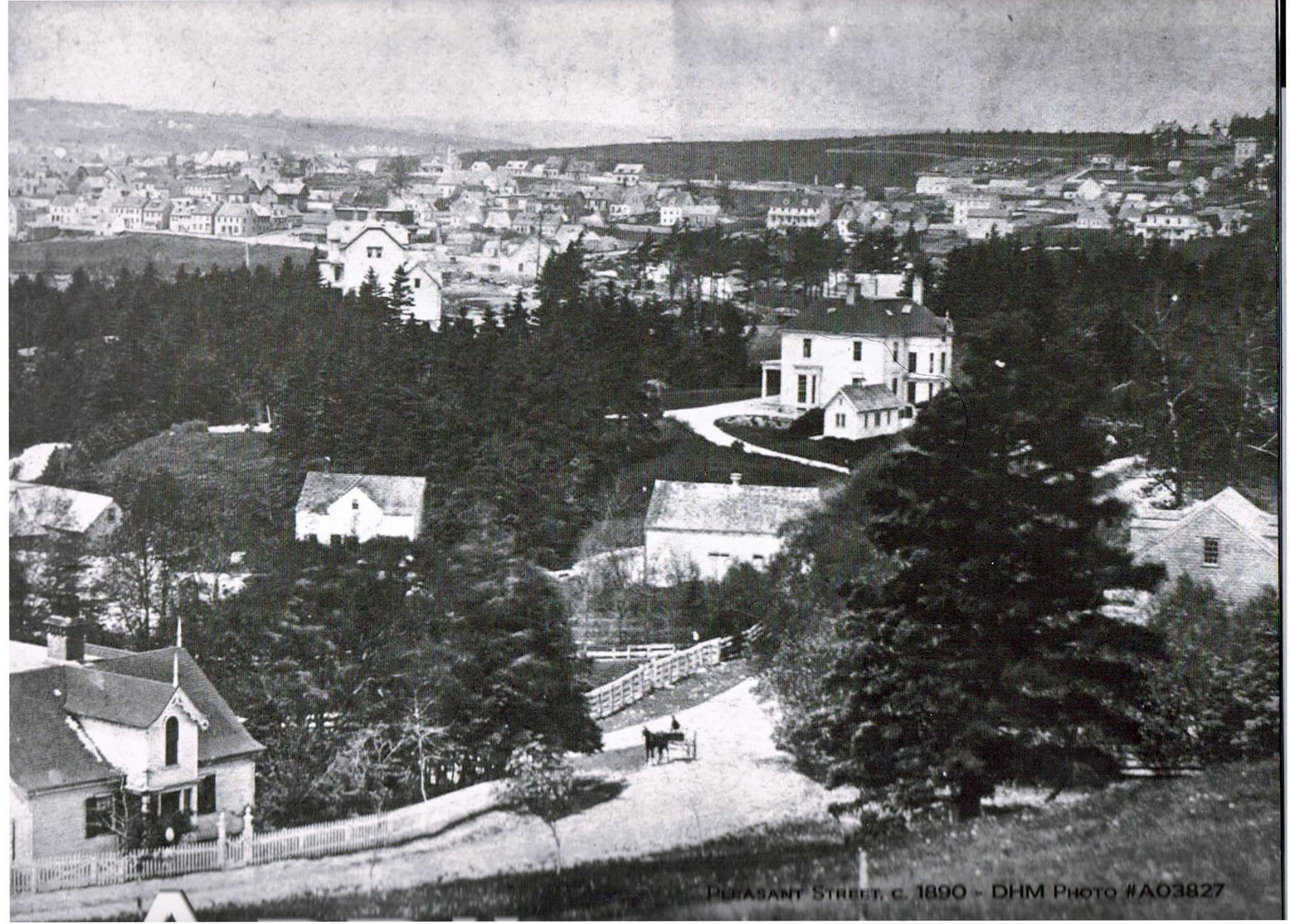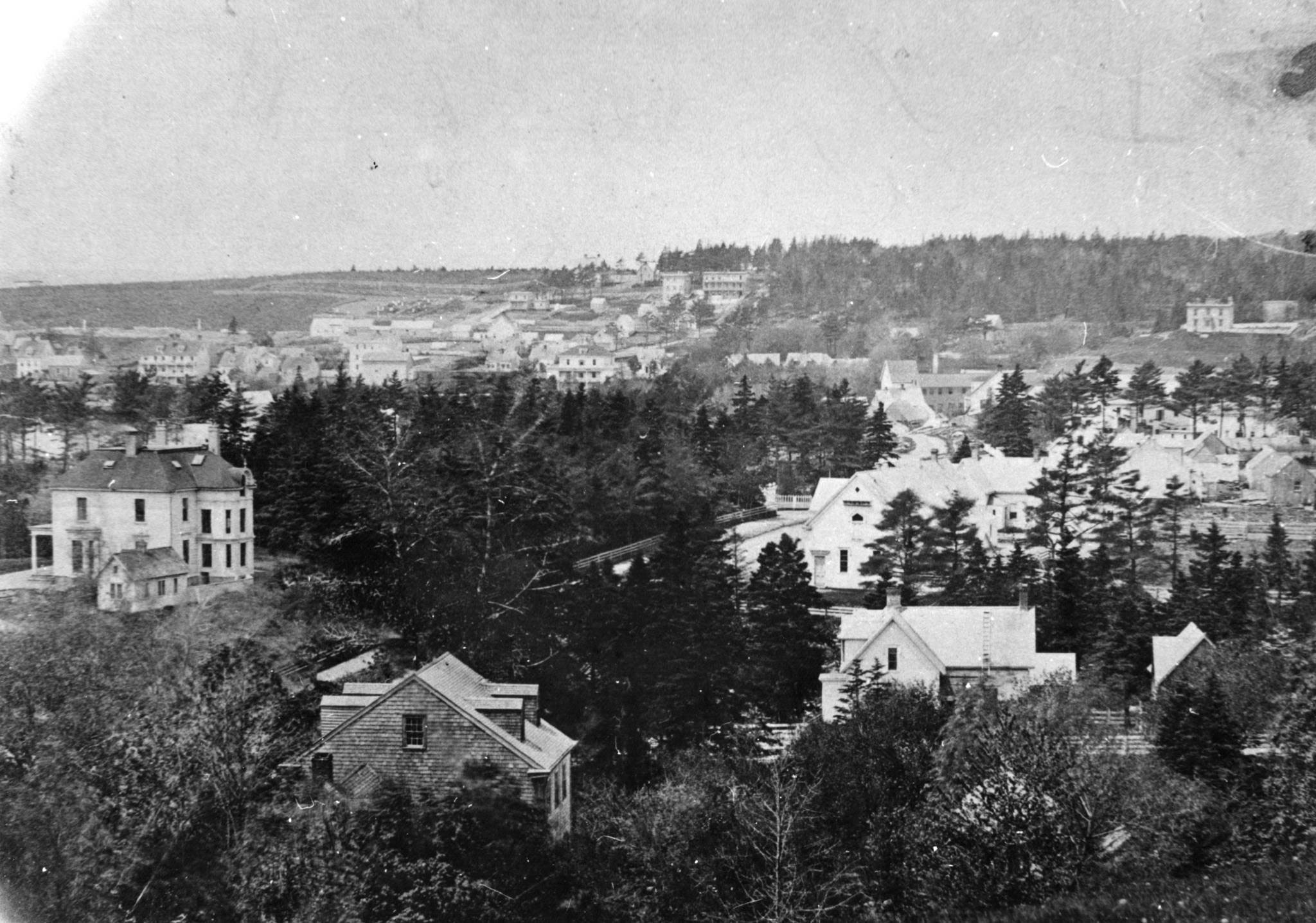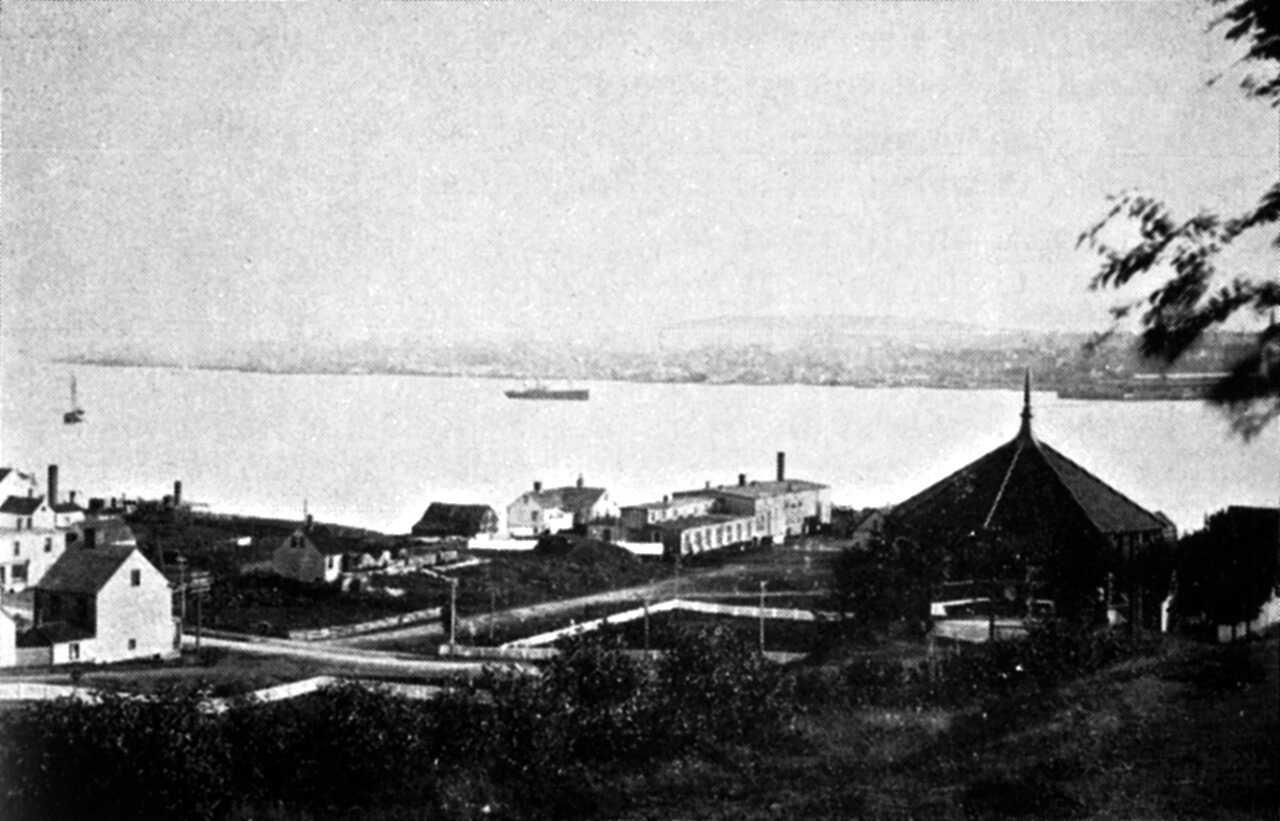From The Story of Dartmouth, by John P. Martin:
Although the exodus of young people seeking work in the United States continued, and there were several houses for sale or let in 1879, yet the industrial situation seemed to be improving.
The annual output of the Starr Factory was about 40,000 pairs of skates and many of these were shipped to the United States and to Europe. Of late years German competition was beginning to threaten their sales. About this time they commenced the manufacture of shovels, and the firm continually submitted tenders on government bridge-building projects. Among local jobs completed by the Starr Factory in 1879 was the making and setting-up of iron vaults and doors for the new Merchants Bank at Halifax. (Now Royal Bank.)
Aggressive Dartmouthians kept up their agitation for a railway that spring. There was talk in the air that the Allan line might build piers in Dartmouth if railroad connections were made available. At a public meeting held in April 1879, resolutions were passed memorializing the Dominion Government on the subject of building a branch line from Windsor Junction. About that time also, steps were taken to beautify the town when the Council encouraged the planting of shade-trees by abating taxes on property so ornamented. The tax rate was $1.05 compared with a 75 cent rate in the first year of incorporation. The estimate expeditures for the municipal year beginning May 1st, was $16,882. An amount was to be asked for the purchase of Lake Loon, and $200 was voted to build a school-house for [black] children. J. G. Foster became Town Magistrate.
Perhaps the biggest construction job that year was the $1,990 contract for a new Baptist Church on King Street built by Rhodes Curry and Co. of Amherst. This Gothic-style edifice occupied the site of the original Church which was then removed to the rear to be used for Sunday School classes.
About the same time, the lofty three-storey structure at the southwest corner of Portland and Prince Street was built for Mrs. Isabelle Lawlor. (This is now Chisling’s corner.)
The present Lesbirel building on Commercial Street was erected for George Craig, the barber-photographer, by Contractor John T. Walker, also in 1879. This soon became the leading tonsorial parlor in town and was patronized by leading citizens. Mr. Craig possessed considerable talent and ambition. As a young man he worked regularly as a factory hand in the Ropeworks, and employed his nightly leisure learning the barbering trade. Barber shops then kept open evenings, and also on Sunday mornings to serve Saturday midnight shop-workers.
Safety razors were 40 years away. The danger and difficulty of manipulating straight-edge razors did not encourage the majority of males to practise the fine art of shaving, with the result that many a man made frequent visits to his chosen barber-shop where his private shaving-mug was held in readiness. Shaves were seven cents. Most adults grew moustaches, sometimes sideburns. A haircut on Saturday night was generally taboo, even though long waits were of little consequence. Spending an hour or so in a group where everybody knew one another was an entertainment in itself, especially with a punster like George Craig steering the conversation.
The masculine privacy of 19th century barber-shops was seldom violated by the presence of women. Occasionally of an afternoon, some fond mother whose young hopeful needed a haircut, might be seen herding the little fellow past the customary row of spittoons to a distant seat where both were isolated from the men-folk, over whom an awed silence would generally descend.
The unsolved mystery of Dr. John McDonald, was brought again to public attention in 1879 when a human skull was found underground in the cellar-kitchen of the house where the Doctor once lived on Blockhouse Hill. For a time the incident aroused considerable excitement among older residents who now felt there was sufficient proof that Dr. McDonald had been murdered in that house. At the ensuing inquest, however, a former occupant, Mrs. Mary Loner declared that the skull had been given her by the widow of Dr. John Slayter, and that she had hidden it in the ground some years previously. Dr. W. H. Weeks also stated that he recognized the skull as the one belonging to Dr. Slayter, and it was supposed to be the head of one of the “Saladin” pirates who were hanged in 1844.
In October, Dartmouth had another mystery on its hands. Hugh Greene well-known resident and former inn-keeper at Skerry’s Corner was listed as missing. His family organized search-parties to scour the woods for some days until tidings came that the old man had eaten dinner at Nichols Hotel at Grand Lake on the 18th. More parties continued the search in that area, and only abandoned their attempts when it was felt that Mr. Greene must have frozen to death or been drowned.
County Magistrate Andrew Shiels, best known as “Albyn,” died in his 88th year at his residence 114 Ochterloney Street in November. His first blacksmith shop was set up near the ferry wharf in Halifax. In the volume of Albyn’s poetry available at the Provincial Archives, appear the following lines deploring the fact that the sacrifices of early settlers are not better remembered:
Lo! even in Quakertown, the fiendish raid Is quite forgotten that the Micmacs made;
And all the legends which it once could boast Have, with itself in Dartmouth, long been lost!
Nor is there any vestige left that says,
Where stood the Blockhouse in the former days.
By 1879 several telephones had been installed in business houses and offices of Halifax. The first telephone line in Dartmouth was a private wire strung that autumn from the residence of John P. Mott at Hazelhurst to one of his factory buildings about 150 yards southward.
In the shipbuilding line, Eben Moseley built a 32-ton schooner called the “Mora.” Alexander Forsyth acquired the grocery establishment in the new shop and residence at the present 85 Commercial Street which had been previously erected by E. L. Coleman. The latter lost the property in a Sheriff’s sale. At the northeast corner of Pine and Ochterloney Streets, an unoccupied house belonging to Alexander Richard was destroyed by fire.
Dartmouth deaths in 1879 included Olivia, 28 years, wife of John Greene, Portland Street jeweler; Anne 61, wife of David Falconer at “Greenvale”; Charlotte, wife of S. P. Fairbanks, Eastern Passage Road (Woodside); Mary Ann 24, wife of Peter O’Hearn, Halifax schoolteacher; Charlotte Donig, 53, wife of John Mansfield; Mary 92, widow of James Collins, Portland Street; Elizabeth 78, widow of Michael Waddell, Blockhouse Hill; Barbara 69, widow of John Jackson; Louise 70, widow and second wife of ex-Premier James W. Johnston, died at residence of her stepson at “Sunnyside”; Stephen Faulkner 66, Dundas Street; Francis Young 67, shipbuilder; Sackville McKay 73, Ochterloney Street; Daniel Sullivan 52, Austenville; Jeremiah Donovan 79; Henry Monohan 39, Porto Bello Road at Port Wallace.

